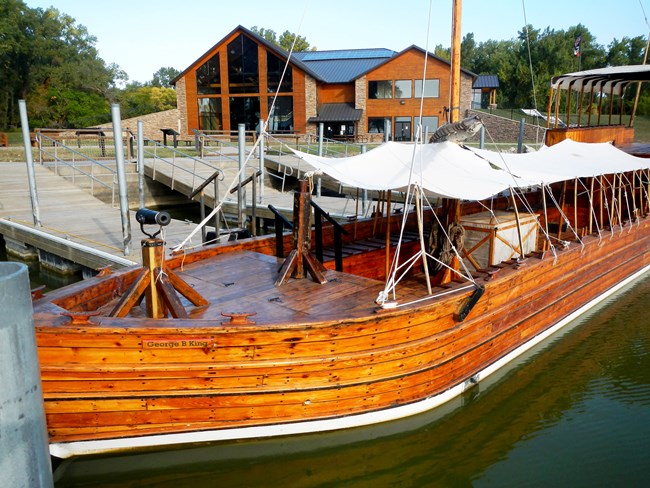Last updated: January 2, 2024
Article
Pierre Cruzatte

Eric Friedebach, https://flickr.com/photos/friedebach/50797337918/
Pierre Cruzatte joined the Lewis and Clark Expedition at St. Charles. He only had one functioning eye, but he brought many important skills with him.
William Clark called Cruzatte “our principal waterman.” Cruzatte had traveled extensively on the Missouri and Platte Rivers on journeys for companies engaged in the fur trade with Indigenous towns.
Lewis and Clark relied on Cruzatte’s understanding of river currents to find the safest paths for their boats. When one of their boats nearly capsized on May 14, 1805, Cruzatte’s quick thinking saved valuable scientific instruments and field notes.
As the son of a French man and an Omaha woman, Cruzatte spoke multiple languages. He knew English, French, Omaha, and the sign language that was common among Indigenous communities and non-Native traders across North America. Along with François Labiche and George Drouillard, Cruzatte sometimes served as an interpreter.
Cruzatte was also a talented fiddle player and used his skill to entertain his fellow travelers at the end of a long day’s journey. One evening in April 1806, for example, some Yakama visited the party at camp “as they wished to hear the fiddle.” Cruzatte and other musicians “played & danced a little to please them.”
It would not have been easy to keep a violin safe during such a journey. Music must have been important to Cruzatte to risk bringing such a delicate instrument.
And the music that he made from that small wooden instrument helped to create friendships between these travelers and the many different people who hosted them along the way.
About this article: This article is part of series called “Pivotal Places: Stories from the Lewis and Clark National Historic Trail.”
